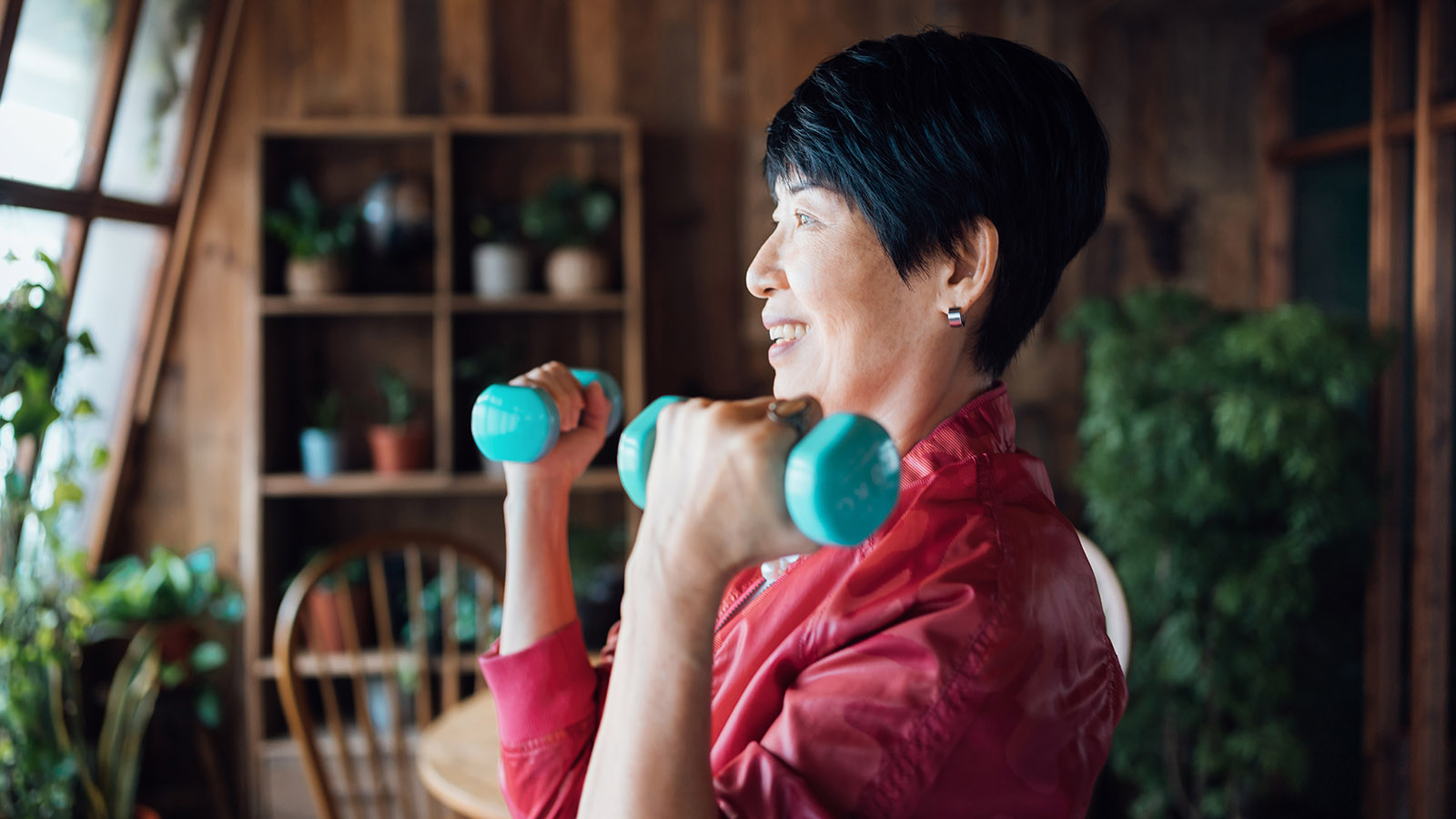8 Stretching and Balancing Exercises for Older Adults
As you get older, it’s important to make time for stretching and balancing exercises. Here are 8 simple moves to try today.

By Jennifer Finegan, PT, OCS, Senior Physical Therapist, Virtua Physical Therapy & Rehabilitation - Westampton
As you get older, it’s important to make time for stretching and balancing exercises. Since bone density decreases as you age, falls put you at a greater risk for fractures.
To strengthen your balance, you should aim for 60 minutes of daily activity (like walking, tai chi or chair yoga) and perform the following stretches and exercises. If you work to keep full range of motion in your joints, it helps you take longer strides when you walk, and prevents you from tripping and falling over your own feet.
1. Doorway stretch
Stand in a doorway and brace your forearms against the doorframe. Keep both arms at right angles—your body should look like a football goal post. Place one foot in front of you and one behind so they're in two different rooms. Push your front leg through the doorway and hold 20-30 seconds per side. You should feel a strong but comfortable stretch across the front of your chest.
2. Calf stretch
Facing the wall, stand about 3 feet back and put your right foot behind you with toes facing forward. Keep your heel on the ground and lean forward with your right knee straight, arms on the wall for balance, if needed. Hold for 30 to 60 seconds per side. You should feel a strong but comfortable stretch in the calf of the back leg.
3. Shoulder rolls
Sit tall with feet flat on the floor. Roll your shoulders up, then back, down, and forward in a smooth, circular motion for 5 to 10 reps (repetitions). Repeat in the other direction.
4. Knee to chest
Lie on your back with your knees bent and your feet flat on the floor. Bring one knee to your chest. Keep your lower back pressed to the floor. Hold for 15 to 30 seconds. Lower the knee to the starting position and repeat with the other leg. Do 2-4 reps on each side.
5. Ankle rolls
Stand on one foot. Raise the opposite foot a few inches off of the floor. Rotate your raised ankle in a circle in one direction, 10 times, and then change directions. Switch legs and repeat.
6. Heel-to-toe walking
Stand next to a counter or table with one hand on it for support. Position the heel of one foot just in front of the toes of the other foot, almost touching. Focus on a spot in front of you and walk slowly in a line for 20 steps. Or, you can face the counter, and put both hands on it. Step your feet apart and together and repeat.
7. Sit to stand
Sit in the middle of the chair. Place hands on opposite shoulders with arms crossed in front of your chest. With feet flat on the floor and a straight back, rise to a full standing position and then sit back down again. Do 10-15 reps.
8. Biceps curls
Hold light weights in your hands at your sides with palms facing in. Bend your elbows toward your shoulders while turning your palms up. Return to the start, and repeat for 10-15 reps.
Need help gaining strength and balance?
Virtua Physical Therapy and Rehabilitation offers convenient locations throughout South Jersey, as well as telehealth visits. Call 888-847-8823 to learn more.
